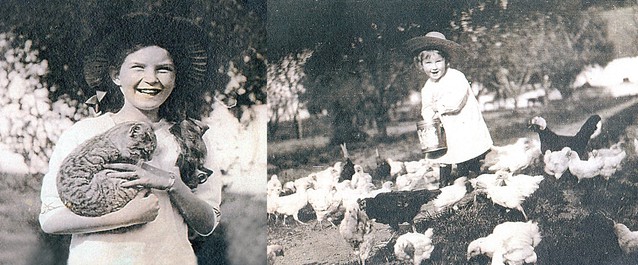Dorothy Bogen Farrington
The Kirk family legacy lives on thanks to the generosity and community spirit of the last resident of the Kirk-Farrington home, Dorothy Bogen Farrington.
Family Genealogy
Dorothy Bogen Farrington was born on March 24, 1905. She was the only child of Della Beach Bogen and William Conrad Bogen.

Dorothy’s mother Della was the youngest daughter of Martha Smith Beach and Tyler Beach, a respected businessman most noted for being the proprietor of the elegant St. James Hotel in downtown San Jose, California. In its day, it was the finest hotel in town, known for its magnificent ballroom, two elevators, and 225 guest rooms. All of the Beach family participated in some way in running the hotel, even the children who drove the buggy to the train station to pick up arriving guests. The hotel was home to the traveling salesmen who brought goods to the growing town of San Jose, and to the men who came out West looking to buy land and start a new life. A legacy of Tyler Beach lives on in the large fan palm trees that he planted in St. James Park, which was located directly across the street from his hotel.
Dorothy's father was William "Will" Conrad Bogen. Will was the eldest son of Conrad Bogen, a German immigrant who came to San Francisco to seek his fortune. Conrad became a well-known business man and resturanteur in San Francisco. He ran the elegant Louvre Restaurant, located in what is now the financial district.
Life on the Englewood Ranch
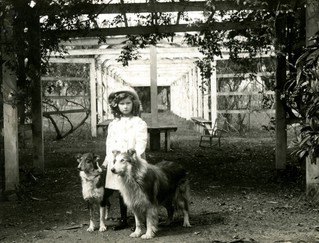
Dorothy’s parents William and Della were orchardists, raising cherries, apricots, peaches, and prunes on their 250-acre Englewood Ranch on San Tomas-Aquino Road in Campbell, California. Her mother was an avid gardener and a frequent guest speaker on gardening topics at local garden and women's clubs. An active member of the Rose Society of Santa Clara County, Della spearheaded the drive to establish the San Jose Municipal Rose Garden. She belonged to numerous horticultural associations including the Wildflower Society.
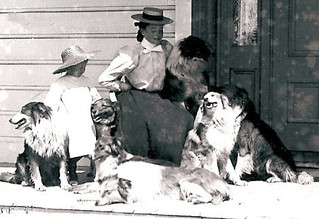
In addition to ranching, both of Dorothy’s parents were passionate dog breeders. Appropriately enough, the couple first met at a dog show. They bred, raised, showed, and sold champion Collies and English Bull Terriers at their Englewood Kennels, located on the family ranch.
Dogs were always present in Dorothy’s life. In old photos of Dorothy taken on the ranch, she is usually accompanied by dogs.
Throughout her life, Dorothy Farrington shared her parents' love of animals. She was never without dogs in her home, and she adored and doted on them. She donated generously to the Humane Society and other animal protection organizations. An entire room in the Kirk-Farrington home showcases her collection of dog memorabilia including figurines, paintings, sculptures, needlepoint pillows, bookends, and photographs, as well as the medals and trophies won by her parents’ champion dogs at the San Francisco Kennel Club shows in the early 1900s.
School Years
As a girl, Dorothy loved ranch life. An inquisitive and intelligent child, she enjoyed nature and the freedom to roam on her parents' large property.
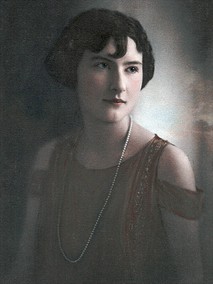
Dorothy’s parents were determined that she would grow up to be more than a farm girl, however. Dorothy first attended Washburn School in San Jose. When it closed due to the 1918 Spanish Flu epidemic, Mrs. Bogen and two friends established El Paso School in downtown Campbell, CA so that their children could complete their primary education. They recruited a teacher from Washburn School and hired a part-time foreign language teacher. The pupil roster consisted of only four students.
Dorothy was an excellent student. She edited and wrote by hand the school newspaper called "The Trail" which contained stories, poems, school news, sketches, photographs, and jokes. Her future husband, Theo Farrington, was also a student at El Paso School. After graduating from El Paso as class Valedictorian, Dorothy was sent to the private and rather posh Castilleja Day School in Palo Alto, California. The mission of this all-girls preparatory school was to provide young women with the education and skills necessary to attend university. At Castilleja, Dorothy continued her formal studies and was introduced to young ladies from distinguished Bay Area families. She graduated with her high school diploma in 1922.
Adventures
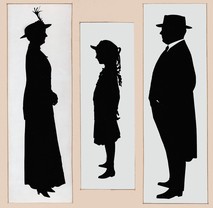
The Bogens were prosperous enough that they were able to enjoy many of the finer things in life. For instance, when the Panama Pacific International Exposition was held in San Francisco in 1915, the family leased an apartment in the City and stayed for an entire month in order to thoroughly experience all of the marvels of the fair. The exhibition ran for 10 months and highlighted all of the latest innovations in science, agriculture, culinary arts, transportation, education, culture, medicine, mining, manufacturing, and entertainment. The fairgrounds stretched from Ft. Mason to what is now known as the Palace of Fine Arts building. Today, this building is San Francisco's sole remaining remnant of the great Panama Pacific Expo.
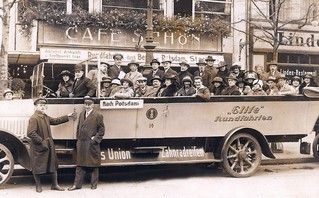
The world was opening up in the early 1900s, thanks to the rise of train and steamer travel. The Bogens were fortunate to be able to afford to travel, a pleasure enjoyed by many well-to-do families of that era. In the summer of 1922, the Bogen family embarked on a six-month “Grand Tour” of Europe, sailing across the Atlantic by steamer and visiting England, France, Italy, and Germany. Dorothy kept a diary of her trip abroad. It contains a charming day-by-day account of people met and places visited along the way. Her writing reveals a remarkably bright, funny, and clever young girl, acquainted with the classics and well-versed in art, literature, and history.
College and Romance
Dorothy was eighteen years old when the family returned from Europe in 1923. Her father expected her to learn a skill or trade that would prepare her for work off the ranch. But he was old-fashioned about women attending college and so she was enrolled in San Jose Business College to learn clerical skills. After graduation, she landed a job managing the office of Judge Tompkins in San Jose. But clerical work proved too tedious for a person of her intelligence. She longed to attend university and eventually talked her father into sending her to Stanford. There she blossomed. She joined the Alpha Omicron Pi sorority and enjoyed campus life. She studied Social Science and graduated with a Bachelor's degree in 1930.
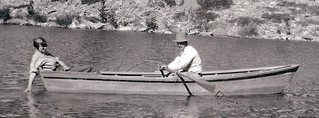
At Stanford, she renewed her friendship with her childhood friend and elementary school classmate, Theo Kirk Farrington. Theo studied Engineering at Stanford and was active in the Kappa Alpha fraternity and many campus activities. The couple began dating and soon announced their engagement. They were married on September 6, 1930. They were both 25 years old.
Married Life
After their marriage, Dorothy and Theo lived for a time with the in-laws on the Kirk family ranch. This was just one year into the Great Depression in America and jobs were scarce. Theo worked at whatever jobs he could find and by 1932 the couple managed to save enough money to build a five-room home of their own on the Kirk ranch, a few blocks away from the family home.
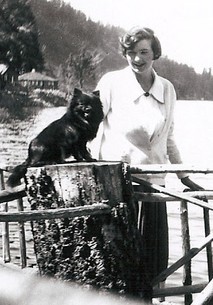
At the outset of World War II, Theo found a full-time job as a civil engineer at Ft. Ord, near Monterey, California. The couple relocated to Pacific Grove, California and Theo was employed there for the duration of the war.
The couple spent the summer of 1945 living in a cabin in the Sierra Nevada mountains, 40 miles west of Truckee, CA,. Theo had a job working for the California State Water Resources Department. It was his responsibility to stifle water disputes among the local ranchers and make sure that all of the ranches in the area got their fair share of water.
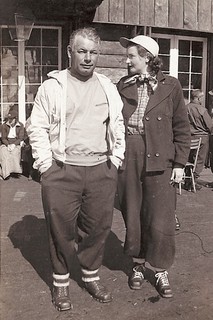
Health and financial troubles drew the couple back to San Jose in the 1950s. Both sets of parents were in ill health and the Kirk Ranch was sorely in need of an experienced hand to manage it. While Theo tended to the ranch, the bulk of the care giving responsibilities fell on Dorothy, who revolved between her in-laws’ and her parents’ homes.
Looking back at those days, Dorothy commented that she wondered how she held it all together. The parents needed constant attention and money was very tight. She used the next crop as collateral to secure bank loans to keep the ranch afloat. She was in a constant state of motion, juggling books and family, trying to keep their heads above water.
Prosperity
Dorothy and Theo moved into the family home in the early 1950s and took over the ranching and business operations in earnest. After the death of Theo’s mother Ethel Farrington in 1952, the couple inherited the Kirk-Farrington estate.
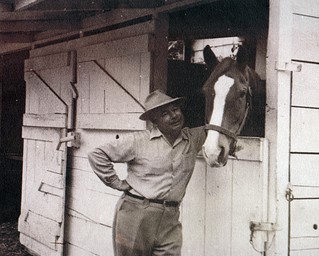
Dorothy remembered that it was truly a working ranch. Behind the house stood a row of shacks housing the laundry room, wood storage, and utilities. The old barn was filled with tractors and tools, and housed an iron forge for blacksmithing. She remembered the fruit harvest, and how, though it was a time of hard work, it was a social time as well. Women came to the ranch to pack the fruit, taking pride in placing the best fruit neatly across the front of each lug so it would present the best face at market. Some neighbors still recall the days when they came to help harvest walnuts from the big trees behind the house. They would lay them out on racks to dry in what is now the rose garden, and later take home a sack full to use in their own baking.
In the late 1950s, Dorothy made some improvements to the old Victorian house to make it more livable. These included modernizing the antique kitchen and adding a wet bar, installing more bathrooms and remodeling existing ones, and enclosing the back porch, which she and Theo used as a family room. They enjoyed their nightly cocktail hour in this room, entertained by the antics of a resident "trained" squirrel they named Bartholomew who dropped by faithfully each evening to share a sip of Martini.
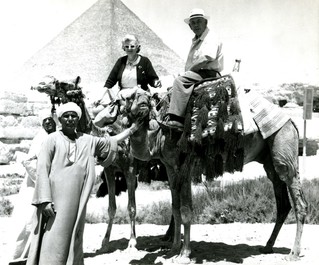
Dorothy and Theo enjoyed prosperity during this period and were able to live a comfortable life, full of friends and travel.
Their many scrapbooks contain photos of friends and family gathered at the Kirk-Farrington home, as well as pictures from trips they took together throughout the United States, as well as voyages to the South Pacific, South America, Europe, and Egypt. They loved Hawaii and had family living there. They visited Hawaii many times during these years.
Theo Farrington died of a heart attack in 1961. Dorothy was 56 years old. The couple never had any children, leaving Dorothy the heir to the Farrington estate which included the house and all its contents, a variety of investments, and the ranch.
Life on Her Own
Dorothy continued to run the ranch during the years following Theo’s death. She was an astute business woman who invested wisely. As the years passed and she grew older, she sold off parcels of land. These were developed and became the residential neighborhoods that surround the house today. Honoring her mother-in-law’s request that the house never be sold, Dorothy retained the home and the two acres that now constitute the Kirk-Farrington estate, and continued to live there until 1978.
Mrs. Farrington was a dynamic person, full of energy and life. Her wit and charm were legendary, she enjoyed a wide circle of friends, and she had an active social and cultural life. The Kirk-Farrington home was the site of many parties and festivities hosted by Dorothy.
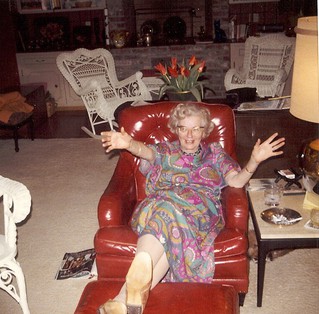
Besides the big house, she also owned residences in Lake Tahoe, Pacific Grove, and San Francisco, which she visited frequently and where she loved entertaining weekend guests.
Mrs. Farrington employed a Chinese cook named Lim Bow Chong who worked for her for thirty-five years. Lim ruled Mrs. Farrington's kitchen. He allocated a small space on the center work island in the kitchen where Dorothy was allowed to make sandwiches. Other than that, the kitchen was his domain. Lim doted on Mrs. Farrington and served her breakfast in bed every morning. She treasured Lim and said that he was one of the most important people in her life. Lim once presented Mrs. Farrington with a blue and gold Chinese enamel vase. It still sits proudly in the entry hall of the Kirk-Farrington house.
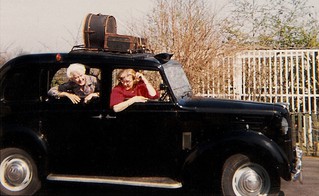
During these years, Dorothy also travelled widely. She visited Hawaii many times, sailing from San Francisco to Honolulu on the famous Matson liner Lurline. Foreign trips included a return to Europe, as well as excursions to Greece, Thailand, Ceylon, Japan, Singapore, Hong Kong, Taiwan, and South America. As she had done as a girl, Mrs. Farrington kept detailed journals on all of these adventures. In London, she fell so in love with the black London taxi cabs that she purchased one and had it shipped back to the States. She enjoyed nothing better than having Lim prepare a hamper full of snacks and drinks, then she and her friends would pile into the cab and drive to the country for a picnic. That black London cab became a common sight around the neighborhood, and was always parked in the old barn on the Kirk-Farrington property.
Philanthropy and Community Service
Dorothy Farrington was dedicated to community service and was a member of many social and charitable organizations throughout her life. She remained active in her college sorority, Alpha Omicron Pi, and served as international treasurer from 1963-1973.
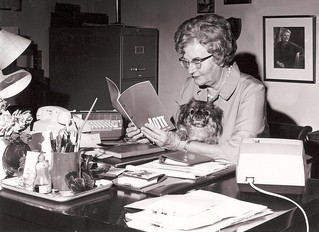
The following organizations are just a sampling of charities in which she was active: P.E.O. Sisterhood, an organization that promotes educational opportunities for women; ToKalon, an honorary women’s organization; the Town Club of San Jose; the Charity League, a philanthropic organization committed to community service, leadership development, and cultural experiences; and Eastfield Ming Quong, whose mission is to help children and families in need. For her lifelong dedication to community service, Mrs. Farrington received the Paul Harris Fellowship Award from Rotary International. She was the first non-member ever to receive this prestigious honor.
Mrs. Farrington’s scrapbooks are filled with numerous awards and certificates that reveal the kindness of her heart and breadth of her charitable giving: Distinguished Citizen award presented by the City of SanJose; the Humanitarian Fellowship Award from the Save the Children Foundation; a Distinguished Contributor’s Award for her endowment to the preservation of the California Governors’ Mansion; a Patron of Conservation award from the National Wildlife Federation; and a deed to ten acres of land in the Kitengela Conservation area in Kenya to be used for the preservation of wild animals in the Nairobi National Park, to name a few.
The Farrington Historical Trust
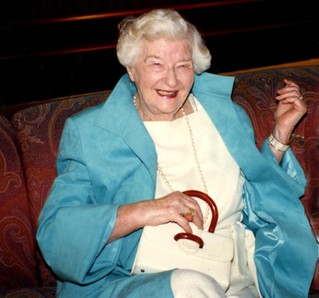
As a result of Dorothy Farrington’s interest in historical preservation and the request of her mother-in-law that she never sell the Kirk-Farrington House, Dorothy established the Farrington Historical Trust in 1974. After considering a number of organizations, Mrs. Farrington chose the Junior League of San Jose, Inc. to be the beneficiary of the Trust and to use the house as its headquarters. She was drawn to the League because of its philanthropic work in the community and because it remains vital by constantly replenishing its membership. Since 1978, the San Jose Junior League has maintained its offices in the Kirk-Farrington House and uses the home for League meetings and community functions.
After Mrs. Farrington turned over the house and its contents to the Trust, she remained actively involved in the activities of the Junior League and the Farrington Historical Trust. Until around 1994, she regularly attended Trust board meetings, assisted in the inventory of the antiques and family memorabilia that remained in the house, and was instrumental in helping establish the current goals and objectives of the Farrington Historical Foundation.
Mrs. Farrington's Legacy
Dorothy Bogen Farrington died in 1996 at the age of 91. After her death, the Trust was incorporated into the Farrington Historical Foundation, Inc. The Foundation is responsible for preserving the Kirk-Farrington home and gardens as a living legacy of Santa Clara Valley history and as the home of the Junior League of San Jose. In addition, the Foundation continues to carry on Mrs. Farrington’s generous philanthropy by awarding grants to local non-profits that are involved in the work she supported, especially, the arts, culture, historical preservation, and animal protection.
Her legacy lives on through her Foundation’s support of the community she loved and where, for nearly one century, she lived a gracious and generous life.
